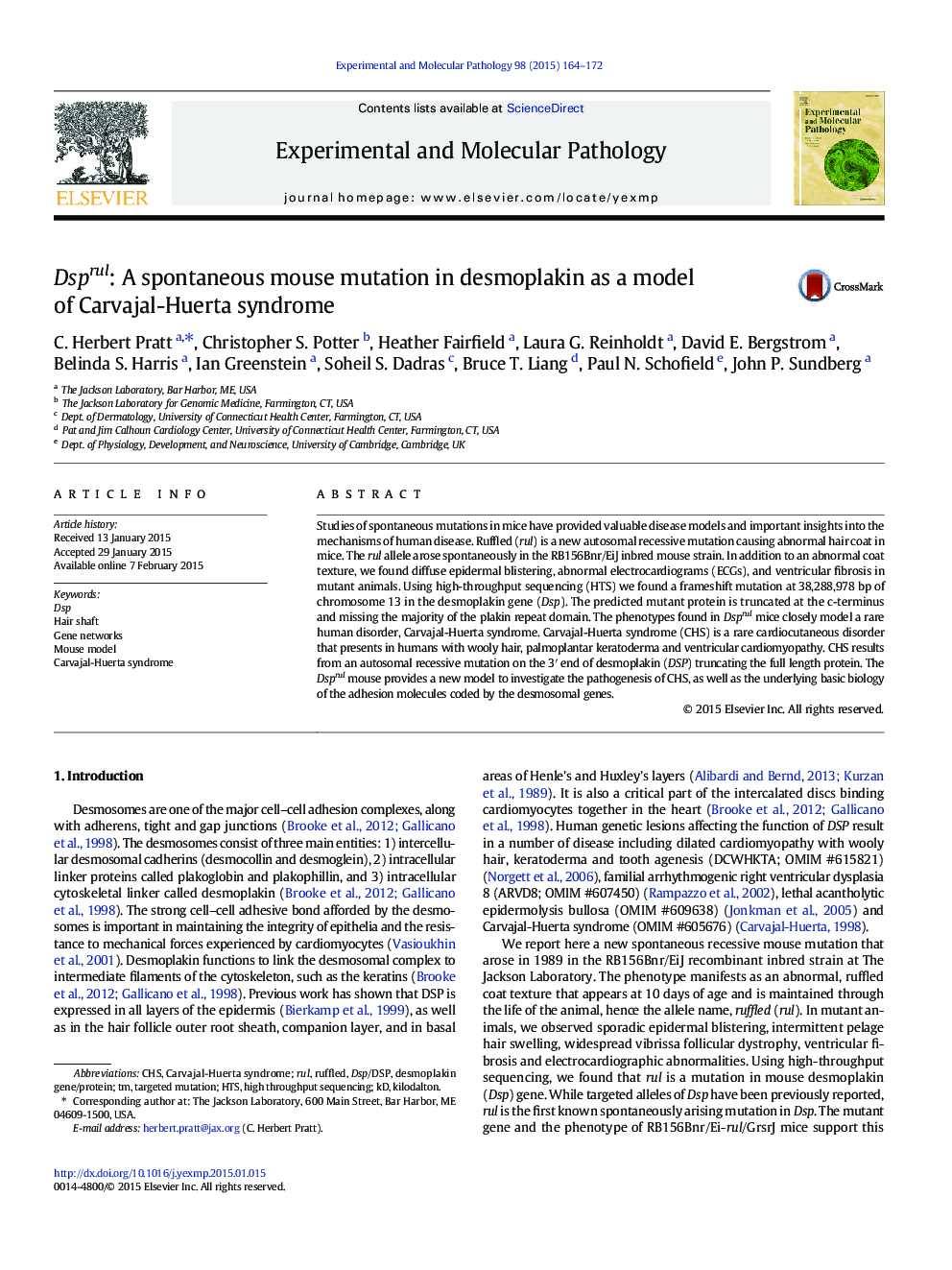| Article ID | Journal | Published Year | Pages | File Type |
|---|---|---|---|---|
| 2774928 | Experimental and Molecular Pathology | 2015 | 9 Pages |
•Spontaneous coat texture mutant discovered in a colony of RB156Bnr/EiJ inbred mice.•The causative mutation was found to be a frameshift in the desmoplakin (Dsp) gene.•Mutant mice exhibit phenotypes similar to Carvajal-Huerta syndrome.•Epidermal blistering, abnormal electrocardiograms (ECGs), and ventricular fibrosis.
Studies of spontaneous mutations in mice have provided valuable disease models and important insights into the mechanisms of human disease. Ruffled (rul) is a new autosomal recessive mutation causing abnormal hair coat in mice. The rul allele arose spontaneously in the RB156Bnr/EiJ inbred mouse strain. In addition to an abnormal coat texture, we found diffuse epidermal blistering, abnormal electrocardiograms (ECGs), and ventricular fibrosis in mutant animals. Using high-throughput sequencing (HTS) we found a frameshift mutation at 38,288,978 bp of chromosome 13 in the desmoplakin gene (Dsp). The predicted mutant protein is truncated at the c-terminus and missing the majority of the plakin repeat domain. The phenotypes found in Dsprul mice closely model a rare human disorder, Carvajal-Huerta syndrome. Carvajal-Huerta syndrome (CHS) is a rare cardiocutaneous disorder that presents in humans with wooly hair, palmoplantar keratoderma and ventricular cardiomyopathy. CHS results from an autosomal recessive mutation on the 3′ end of desmoplakin (DSP) truncating the full length protein. The Dsprul mouse provides a new model to investigate the pathogenesis of CHS, as well as the underlying basic biology of the adhesion molecules coded by the desmosomal genes.
